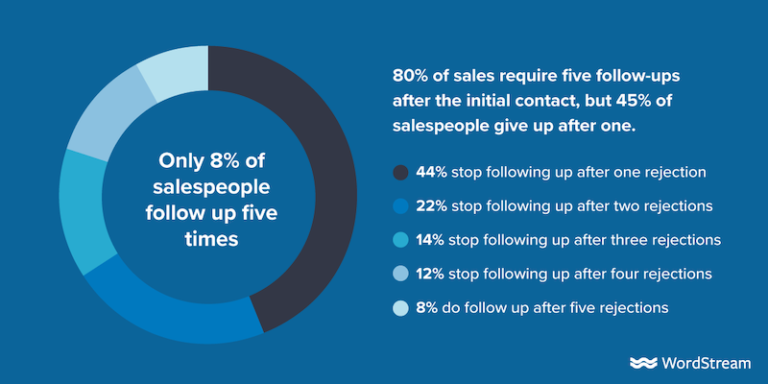31st Jan 2019 – 
This is surely one of the major points which needs to be taken into consideration by anyone thinking about bringing AI into their email marketing campaign. While artificial intelligence often does an excellent job of mimicking human interactions and patterns of communication, it still has a long way to go before it becomes genuinely compelling.
Cost savings The future is here, and it’s frequently outperforming even the most outlandish of science fiction fantasies. Artificial intelligence is transforming our lives, step by step, and industry by industry. We may have once imagined that AI would primarily involve household robots preparing your eggs in the morning, but the reality of this enormous leap in human endeavor is altogether more subtle, and altogether more interesting. Instead of replacing human work and interactions, AI is more commonly being used to enhance, sharpen, and quicken such things… and this can be seen in fascinating ways when it comes to everyday tasks such as email marketing campaigns.
Lacking human touch and imagination
The Pros
It goes without saying that AI can save a lot of money, in a whole lot of ways. Having your own digital assistant intelligently taking on a lot of the donkey work for you has clear advantages of its own, but also AI can end up increasing the ROI of your campaigns overall.
It’s true: it looks as though the rise of the machines needs a fair bit of fine-tuning before it actually happens in any dramatic way. The algorithms used by AI in email marketing campaigns can be enormously helpful but rely on them 100% at your peril. Unless you’re paying close attention, errors in the algorithm can arise without you even noticing, which can end up wasting an enormous amount of time and money and is likely to have a deeply adverse effect on how your recipients feel about your campaign as a whole.
Looking like spam is a great danger which every email marketing campaign faces. We’re all aware of how annoying spam emails can be, and most of us have a spam folder on our email servers which is overflowing with such material.
Algorithms aren’t 100% reliable
Personalization, Personalization, Personalization
Think about it in terms of customer service in a shop: would you prefer a super-speedy, robotic assistant, zipping through questions with remarkable pinpoint accuracy and pace or would you prefer someone who takes their time to listen to you, and warmly greets you as they help you find what you are looking for? Both examples have their plus points, but it’s probably fair to say that the latter would take the prize every time.
However, as yet, the system is far from perfect, and many would claim that artificial intelligence can never authentically replicate the attention to detail, warmth, and authenticity of genuine human-led customer service and communication. With so many pros and cons to consider, and with such a sharp rise in the use of AI in email marketing campaigns, it’s high time we took a closer look at whether artificial intelligence is worth investing time and money into when it comes to this aspect of marketing and promotions.
So, without further ado, let’s dive right into the argument, and consider where AI hits the right notes, and where the rise of the robots might just need to wait a few more years before it takes over altogether.
Sometimes, AI can be a victim of its own successes, and this is often especially the case in email marketing campaigns, which are trying to benefit from the latest technologies. Campaigns run via artificial intelligence often tend to be just a little bit too quick and easy, and fire off responses and results at a speed which some recipients will find off-putting. After all, nobody likes to think that a robot is dealing with them, and the pace at which some AI assistants work can bring some members of the public into the realm of the uncanny valley, and make them wish for an altogether more human level of service.
Furthermore, AI has the potential to save plenty of time in organizing marketing contact lists and prioritizing specific tasks. As we all know, time is money and those hours saved by a nifty AI program can end up making a significant financial difference to the cost of your campaign.
All email marketing campaigns benefit from being streamlined in many different ways. AI can help emphasize a focus on warm leads and follow up on recipients who have expressed an interest in the subject of your campaign in the past. These are the recipients who are most likely to end up making some purchases, and as such, you want to do all you can to ensure that inquiries are followed up, and interest is turned into sales.
The Cons
This is especially true when it comes to things like a paper writing service; the ability to adapt, to use wit, skill, and imagination is central to the success of such services. AI may one day be able to get close to imitating the skill and craftsmanship of an expert essay writer but that day seems a long way off as of now.
AI is pretty much perfect for this aspect of email marketing campaigns, as it is able to ‘remember’ previous interactions, in order to sharpen and tailor the communication you have with your public. Your recipients end up feeling more valued and will be primed and more likely to follow through with your desired interactions and transactions. Everyone’s a winner!
On top of that, the sort of problems and issues you’re likely to come across during your campaign are those which are going to rely on very human traits to overcome: intuition, adaptability, flexibility, imagination, and quick-wittedness. As yet, AI has proven to be unsuccessful in demonstrating such skills and responses, and until it does, plenty of us will continue to give it a wide berth and approach AI with some caution.
AI can help massively in this department because the algorithms and digital memory involved can help get your material through an email server’s spam filters. One relatively simple way of doing this (which also really helps the way your email marketing is received by the recipient) is just by using the first name in the subject box and at the opening of your message so easy, yet so effective! If you’d like to see other tips for getting through spam filters (with or without AI) check out this list on WebEngage.
Getting Through the Spam Filter As mentioned previously, today’s public is keen to get a more customized and tailored experience from all of their online interactions. This is as true for when receiving email marketing campaign material as it is for when they’re online shopping; just consider the success of algorithms on Amazon and Netflix (among many, many others) which pre-select recommendations, or remember previous interactions to enhance the online experience.
Higher levels of streamlining
While customers may be demanding more personalization, more customization, more speed, and more accuracy, none of these factors – as yet – has become more important than the significance of a personal, human, and warm connection with an actual person on the other side of a computer screen. In a world which is increasingly digitized and robotic, human interaction and human-driven marketing campaigns are possibly becoming more cherished and valued than ever before.
Customers still like to feel as though they have a personal connection
In retrospect, marketing – and especially written marketing, such as email interactions between clients and customers – was always a fertile realm for AI to involve itself in. At the end of the day, the aim of email marketing campaigns is spreading a persuasive message across as larger number of people as it is possible. As people become more demanding when it comes to interacting with companies, and expect a more personalized level of service from those interactions, it should come as no surprise that AI bots and servers have stepped in to fill a crucial gap.
Too much, too soon?
AI In Email Marketing Campaigns: The Human Touch vs AI Efficiency
AI in email marketing campaigns is definitely here and is unlikely to vanish any time soon. In many ways, it’s opening up exciting new horizons for marketers, writers, and all other aspects of countless different industries. However, there’s still plenty of value in interacting with a real person, and there’s unquestioned value in the warmth and authenticity of the human touch and that’s not going to go anywhere fast.






